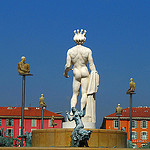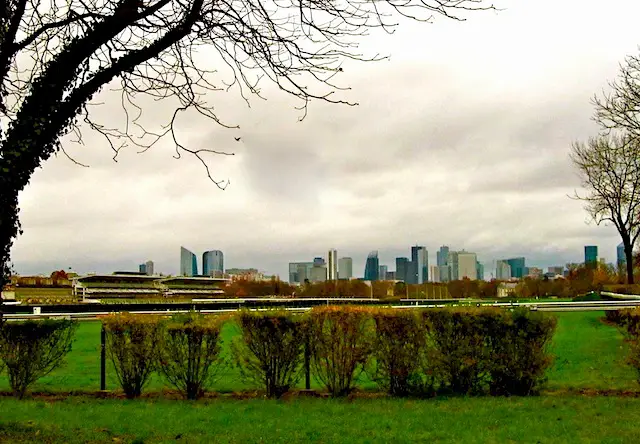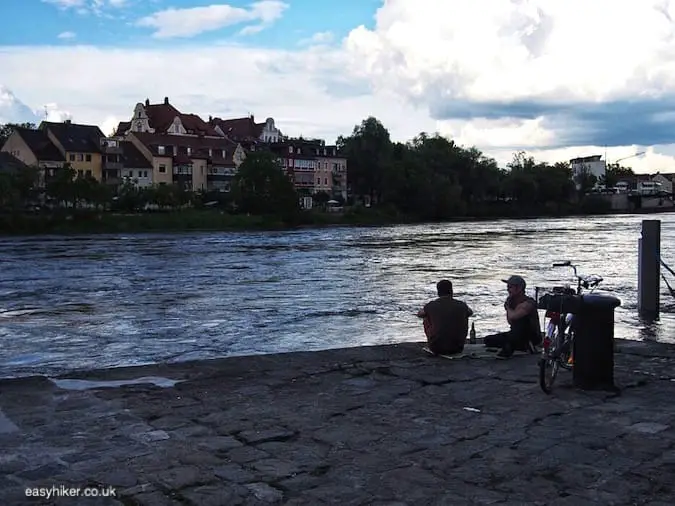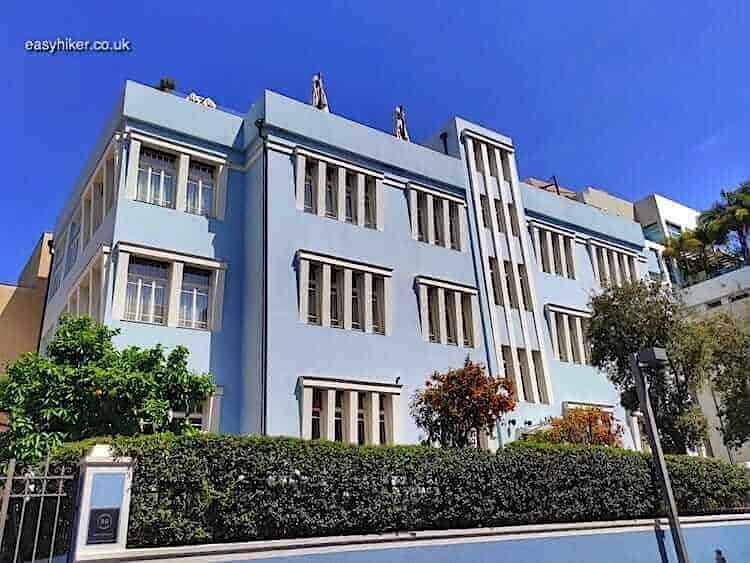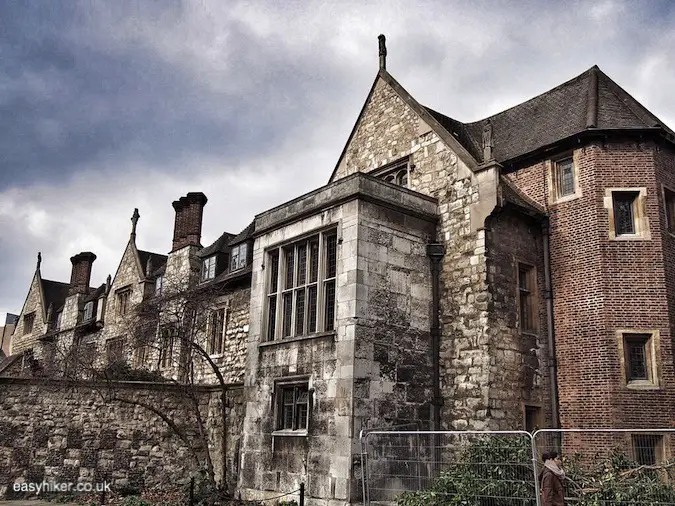Most people would classify Sestri Levante as a “tourist town”, but you should not think that this is a good reason for bypassing Sestri on your tour of Northern Italy. First of all, because the tag “tourist town”, although commonly used with more than a hint of contempt, is not, if you think about it, such a damning label. Think of the alternatives: would you really prefer to visit a “non-tourist town”, a place shunned by visitors because it is so joyless and unattractive?
Just as importantly, however, the specific nature of Sestri’s status as a magnet for visitors is what adds an additional interest, a unique selling proposition even: since domestic tourists vastly outnumber foreign ones in Sestri, the town has been moulded for decades to fit the likes and preferences of Italian tourists. This allows you a glimpse into the country’s soul – at least into the corner where these likes and preferences are formed and organized.
Overall, I believe it is fair to say that the Italian idea of a good holiday is different from Northern European and American attitudes. Most natives, for example, do not like to spend their summers trudging through dusty museums and musty old churches in search of cultural treasures.
Which is not to say that Italians do not appreciate handsome architecture, on the contrary, …

… but they enjoy it as a scenic backdrop for the Party of Life, with shapes and colours as carefully matched as an Italian woman’s (or man’s) attire: Italians always make sure that, whatever they put their hands to, something is added to delight the eye.

Neither would most Italians hike for hours and hours to find some instantly Instagrammable landscape drama, cliffs and waterfalls and such like. They would much prefer a scenic beach …

… and walking routes that are perfectly sized for a short and relaxed stroll, ideally something that can be squeezed in between lunch and an afternoon nap – no 40-km marathons through mountainous terrain, per favore.

It is on exactly such a short and pleasant stroll that we will be taking you today.
Holiday like an Italian in Sestri Levante
To get to the most scenic part of Sestri Levante, leave the main entrance of the train station into Viale Roma and turn left into Viale Mazzini. Continue until you come to a large roundabout and then take the road diagonally ahead to the right (“2 o’clock” as an air force navigator would say) into Corso Colombo which eventually merges into Via XXV Aprile, the main street of the Old Town.
On your way, you will be passing the Villa Balbi, which, behind heavy iron gates and forbidding walls, looks like the House of Roderick Usher’s Italian cousin but is in fact a busy Grand Hotel. (Its much more welcoming main entrance is on the other side, facing the sea.)

Villa Balbi is one of Sestri’s most historic buildings and was constructed in the 17th century as an out-of-town residence for the Brignole family, one of the richest and most powerful clans in late medieval and early modern Genoa. (If you have arrived from Genoa, you may even have entered your train in the station that bears their name.)
Shortly after that, you will find that the land on the left and the right of Via XXV Aprile seems to be shrinking, and you will be able to see the blue water of the Mediterranean on either side of the street.

This has to do with another distinctive feature of the town. It would appear that Sestri has been built on a narrow peninsula, but in fact, the ground under your feet is a causeway that was artificially constructed at some stage in the 18th century to connect the mainland with what was then an island. (Charmingly, no document appears to exist which would indicate when exactly this causeway was built.)
Today, two beaches are located on either side of this causeway, one that is lining the Baia delle Favole in the north (the Bay of Fables was named after the writer Hans-Christian Andersen who spent a summer here in 1833) while the other one encloses the Baia del Silenzio, the Bay of Silence.

I am not sure whether you will find much silence here in the summer (Italian-style holidays are a communal experience, large groups of friends and multi-generational families creating the soundscape for which the country is justly famous), but in the winter, the Bay of Silence is a veritable haven of serenity and calm.

From the Baia del Silenzio, take a left turn uphill into the Via Peninsola Levante. For centuries, Sestri’s location as an island that was separated from the mainland only by a narrow strip of water made it seem the perfect place for a spiritual refuge or a military fortress, and it was indeed used for both purposes during the Middle Ages.
The monks came first, just before the end of the first millennium, while the Genoese army followed about 150 years later. The Church of San Niccolo, as it stands today, dates from this latter period (it was consecrated in 1151), and although it was almost continuously rebuilt for hundreds of years, it still appears to be shrouded in the archaic air of early medieval monastic life.

This is how far you can walk into the promontory. The land further to the west of San Niccolo belongs to a luxury hotel (the Grand Hotel dei Castelli) and has been closed off for walkers. But you can peek through the fence for a glimpse at the promontory’s rugged coastline.

On the way back downtown, you will pass Sestri’s second-most picturesque ruins. For their powerful romantic atmosphere (Tintern Abbey and all that), the remains of the Santa Anna Church outside of town are hard to beat …

… but the Oratorio di Santa Caterina comes a close second.
Both buildings are from roughly the same period (the 16th century) and are embedded in a similarly picturesque scenery of buildings in Ligurian colours and the Mediterranean coast, …

… but this is where the parallels end.
While the Santa Anna ruins’ background story is as colourful as the scenery around it, the past of the Oratorio is disappointingly mundane: the church was established by a confraternity of wealthy merchants and destroyed not centuries ago but in living memory by an Allied WWII air raid in 1944.
This, however, is the only thing disappointing about Sestri Levante, a place which makes for a delightful day out from Genoa.
The only way that a visit of Sestri can disappoint is if you confuse Sestri Levante (the “Sestri of the East”) with its near-namesake Sestri Ponente (“Sestri of the West”) and travel instead to this industrial and – by all accounts – rather humdrum suburb of Genoa. It seems unlikely that you will find any Italian tourists there – or much to delighta foreign visitor either.
Feel free to do some pioneering work and give Sestri Ponente a shot, but on balance, it feels safer to trust the natives on this – and, at least for one day, holiday like an Italian.

